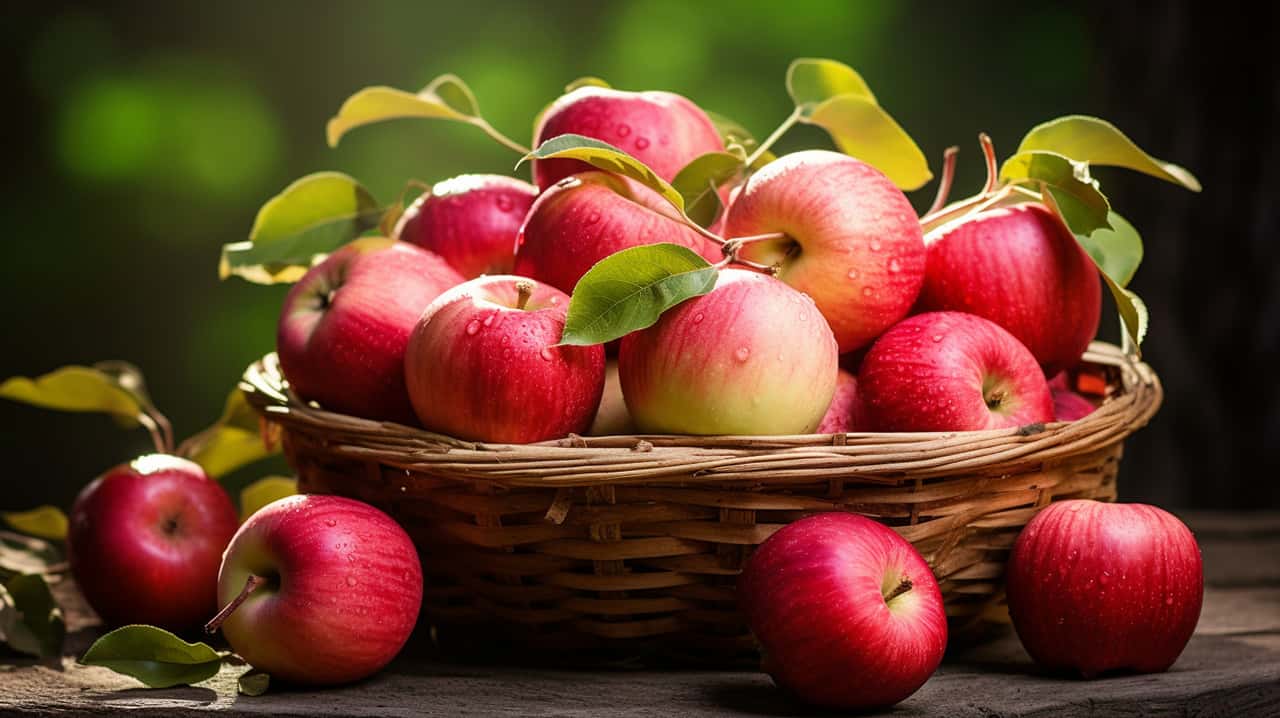Has your head ever spun from the dizzying array of apple varieties, all stacked together in neat rows at the grocery store? I absolutely know that feeling! Among this sea of incredible options, though, there’s one variety that has sparked my curiosity – the Sweet Sixteen Apple.
These apples are particularly intriguing due to their unique flavor and ability to thrive despite cold climates. So, today on our blog, we’re doing a deep dive into everything Sweet Sixteen – their rich history, distinctive traits, health bonuses, and even some pointers on how you can cultivate these tasty treasures right in your own backyard.
Buckle up for an appetizing adventure!
Key Takeaways
Sweet Sixteen Apples are a mix of Northern Spy and MN 447 (Frostbite) apples.
These apples have a sweet, unique taste with cherry candy and vanilla hints.
They contain health benefits like fiber, vitamin C, potassium, and vitamin K.
You can grow your own Sweet Sixteen apple trees in places that get full sun and cold weather.
Table of Contents
Origins and History of Sweet Sixteen Apples
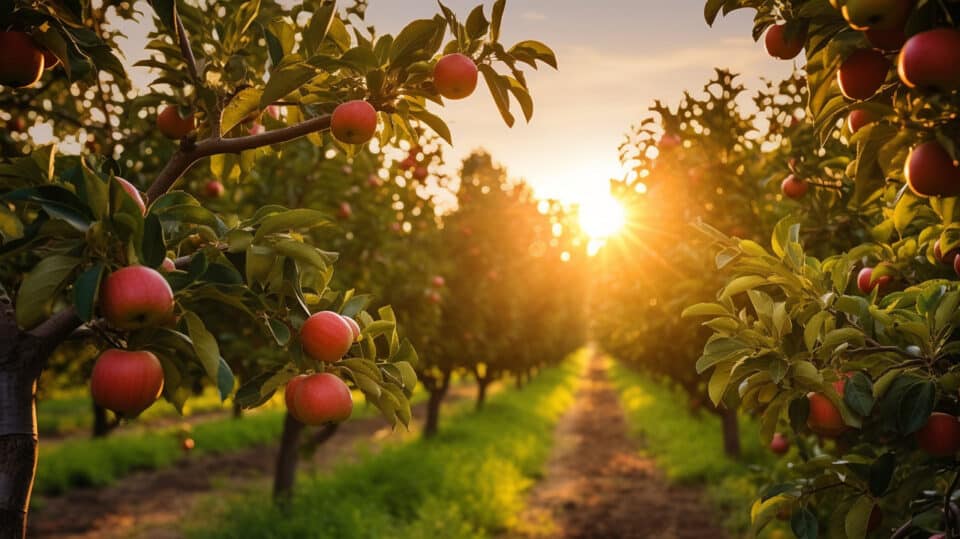
Sweet Sixteen Apples was born in Minnesota. The year was 1977, and apple makers at the University of Minnesota had a new idea. They took two types of apples, Northern Spy and MN 447 (Frostbite), and mixed them together.
This mix made a brand new type of apple: Sweet Sixteen.
Sadly, you can’t find these apples in every store. The University didn’t get a patent for Sweet Sixteen Apples, so they’re not all over the place. But that makes finding them even more special! You’ll feel like you found a hidden treasure when you get your hands on these unique fruits.
Characteristics of Sweet Sixteen Apples
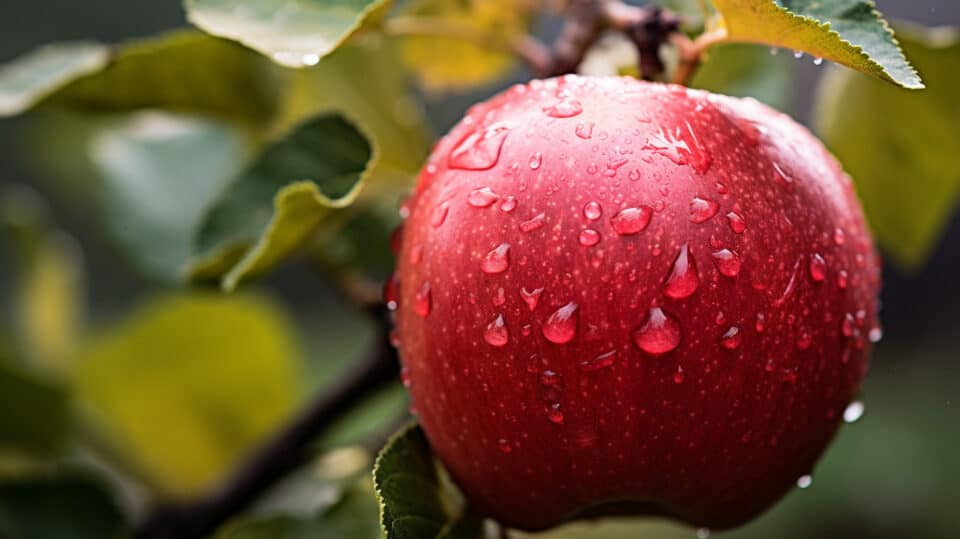
Don’t let their modest exterior fool you; Sweet Sixteen apples are a treasure trove of flavor. These medium-sized fruits feature a unique rose-red skin studded with pale lenticels, hinting at the exotic yellow flesh beneath.
One bite, and you’re hit with an explosion of sugar cane sweetness, complemented by intriguing notes of spicy cherry candy. Beyond its taste, this apple cultivar boasts impressive cold-climate tolerance and disease resistance, making it as hardy as it is tasty!
Appearance
Sweet Sixteen Apples are a good size – not too big or too small. The apples are pretty with a yellow base color. On top of that, they have bright red-pink stripes.
This makes them pop and look fun in any fruit bowl!
The inside is as nice as the outside. It has crisp flesh that is juicy when you bite into it. All these things make Sweet Sixteen Apples special to look at and eat!
Taste
Sweet Sixteen Apples are a joy to taste! Their flavor pops in your mouth with notes of spicy cherry candy and vanilla. They have a bit of licorice, too, which makes them quite unique.
I love how the bourbon hints give it an adult twist. But be ready for a sweet punch. These apples have a high sugar content, so they really live up to their name! Some people find them too sweet, but not me – they’re just right!
Health Benefits of Sweet Sixteen Apples
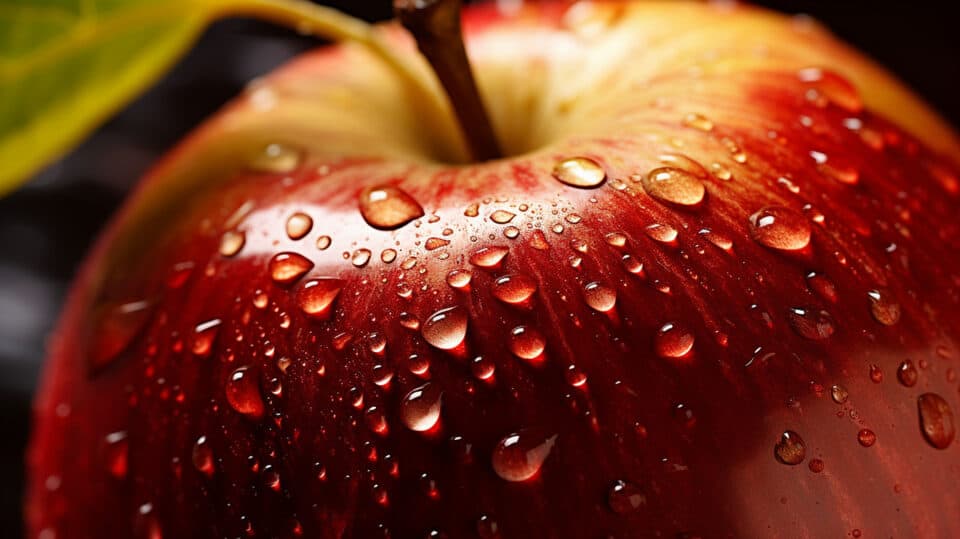
Eating Sweet Sixteen Apples does more than just satisfy your sweet tooth. Here are some health perks you can enjoy:
- Sweet Sixteen Apples have lots of fiber. Fiber is good for our guts and keeps us feeling full.
- They offer vitamin C. This helps keep our immune system strong so we don’t get sick often.
- These apples are rich in potassium. Potassium keeps our hearts healthy and nerves working right.
- They also contain vitamin K, which is important for our blood to clot properly.
- Eating these apples adds to a balanced diet, which makes us healthier overall.
- Homemade applesauce from Sweet Sixteen Apples is tasty and good for you, too!
How to Grow Sweet Sixteen Apple Trees
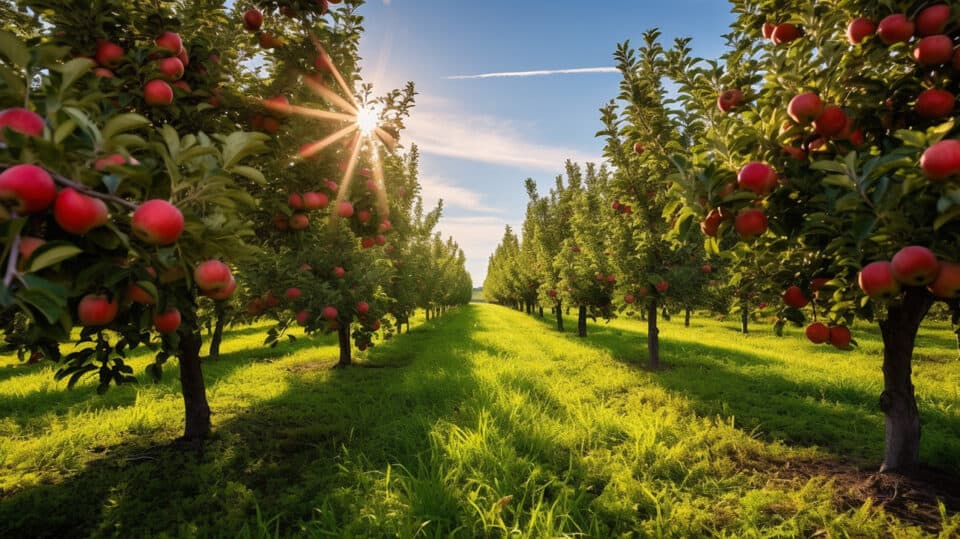
Brace yourselves because growing Sweet Sixteen apples is a journey! From selecting the perfect spot with full sunlight to mastering the art of pruning, it’s all about love and patience.
But don’t worry; their high sugar content and cherry candy flavor make every effort worth it. Learn more about cultivating these cold-climate fruits in your own backyard and experience the joy of picking up fresh apples from your tree every fall season!
Ideal Climate Conditions
Sweet Sixteen Apples like cold places. They do well in northern areas and handle the chill well. The plant is strong when the temperature drops low. It was made by the University of Minnesota, who are experts at this.
These apples enjoy full sun and thrive best in it.
The soil needs to be just right for Sweet Sixteen trees. Sandy loam or clay loam soils work best. Make sure the ground is not too dry or wet but in between. This kind of apple tree can deal with a little drought but likes moist soil better.
Pollination Factors
Sweet Sixteen apple trees need a buddy to make apples. We call this cross-pollination. It means one kind of apple tree needs to get pollen from another kind of apple tree. When the flowers bloom in late spring, bees and other bugs move the pollen from one flower to another.
This helps make baby apples! The good news is that many different kinds of apple trees can help with this job.
How to Use Sweet Sixteen Apples
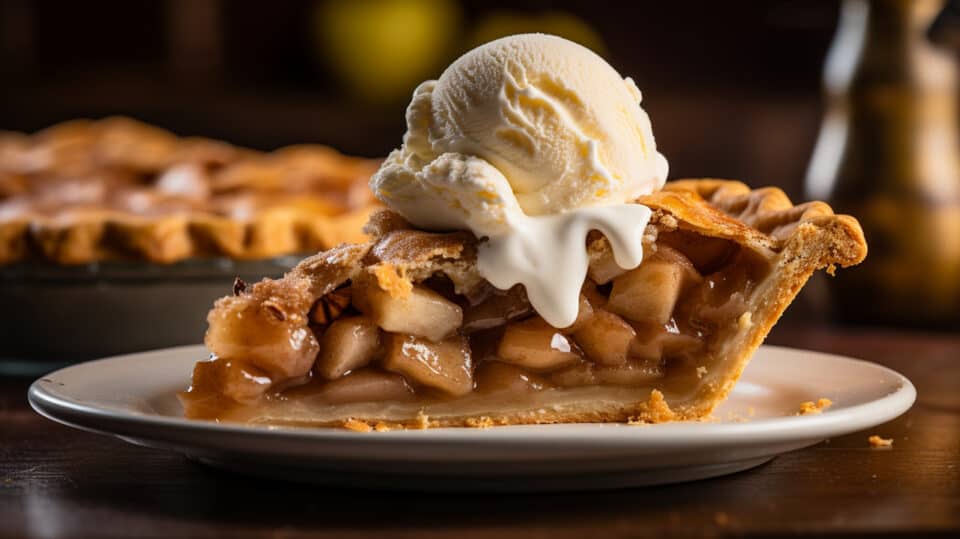
Whether you’re looking to whip up some mouthwatering apple muffins, rustle together a crunchy apple walnut salad, or simply enjoy them fresh from the tree, Sweet Sixteen apples bring an unrivaled flavor punch! Keep reading, and let’s embark together on more delicious adventures with these apples.
Cooking Ideas
Sweet Sixteen Apples are great for cooking. They add a sweet twist to your regular dishes. Here are some ideas on how to use them:
- Make homemade applesauce with Sweet Sixteen Apples. Their high sugar content will give it a natural sweetness.
- Bake apple muffins for a quick breakfast or snack on the go.
- Add chopped Sweet Sixteen Apples to your apple walnut salad for an extra crunch.
- Use them to make an apple cheese board during fall as an appetizer or dessert.
- Try baking apple dumplings with Sweet Sixteen Apples for a sweet treat after dinner.
Storage Tips
Storing Sweet Sixteen Apples right will keep them fresh and yummy for longer. Here are some tips to do this:
- Keep your apples in a cool place around 90% humidity.
- Carefully pick the apple off the tree so it keeps its flavor.
- If an apple gets hurt, use it fast so it doesn’t go bad.
- Sweet Sixteen Apples taste best if you eat them right after picking them.
- Don’t use these apples for desserts where you need the apple to stay firm.
- You can keep Sweet Sixteen Apples fresh in a root cellar or fridge.
Similar Apple Varieties to Sweet Sixteen
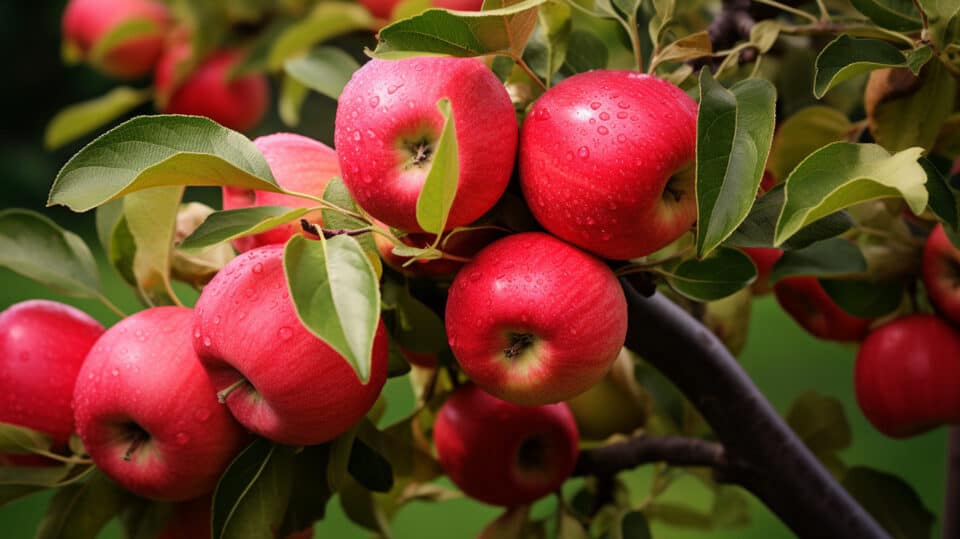
Well, darlings, if you can’t get your hands on Sweet Sixteen, don’t fret. Many other apple varieties offer similar delightful flavors and textures. In fact, you might find yourself falling head over heels for one of these substitutes.
| Variety | Description |
| McIntosh | Just like your favorite old-school rapper, this apple packs a punch. It has a tart and tangy flavor with a tender, white flesh. It’s a fantastic choice for sauce or juice, but like our Sweet Sixteen, it doesn’t hold its shape well when cooked. |
| Honeycrisp | With a name like Honeycrisp, you know you’re in for a treat. This apple is incredibly juicy and has a perfect balance of sweet and tart. You can enjoy it fresh, use it for baking, or even add it to your salads for a juicy crunch. |
| Fuji | Named after Japan’s most famous mountain, this apple is a powerhouse. It’s incredibly sweet and firm, making it great for almost anything. You can munch on it fresh, bake it into pies, or even use it for cider. |
| Golden Delicious | This apple isn’t just delicious – it’s golden delicious. It’s versatile with a balanced sweet-tart flavor and buttery flesh, making it a top pick for apple sauce. But unlike our Sweet Sixteen, this beauty holds its shape beautifully when baked into pies. |
Remember, sweetie, variety is the spice of life, and each apple brings something special to the table. So, why not give these a try and find your new favorite?
Where to Buy Sweet Sixteen Apples and Trees
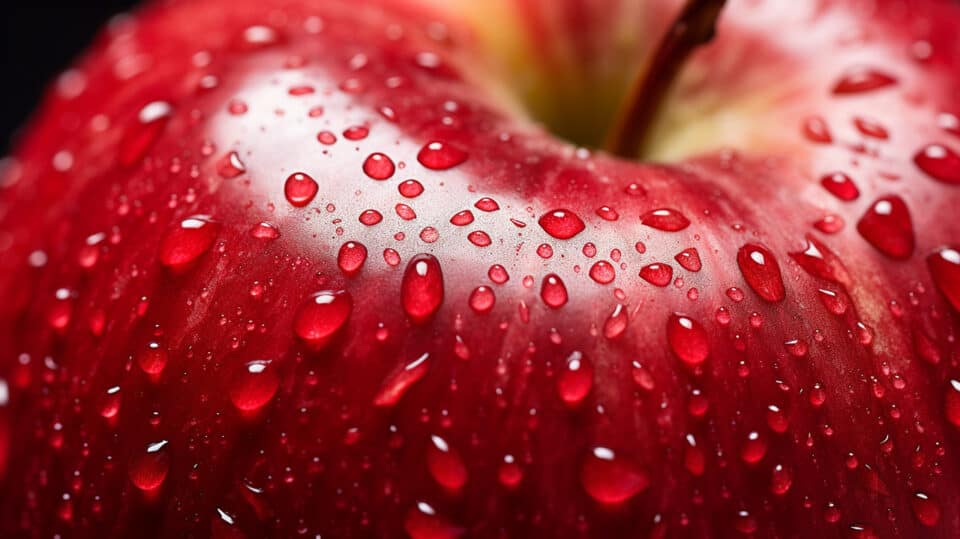
You may find it hard to buy Sweet Sixteen apples at your local grocery store. This is because the University of Minnesota did not patent them. So, they don’t get sold in stores often.
But there is still a way to enjoy these tasty fruits! You can grow your own Sweet Sixteen apple tree!
Look for nurseries or online shops that sell fruit trees. They might have Sweet Sixteen apple trees for sale. Try places like Cummins Nursery and Midwest Apple Improvement Association.
Both offer mail-order services so you can get trees sent straight to your home. Make sure to ask if the tree will do well where you live before you buy it.
Conclusion
Sweet Sixteen Apples have a lot to offer. These apples are tasty and good for you, too. You can grow these trees in your backyard even if it’s cold! Once they grow, the apples will brighten up your kitchen, ready for a nice bite or a fun time making apple food.
Frequently Asked Questions About Sweet Sixteen Apples
What is a Sweet 16 apple?
A Sweet 16 apple is a cold-climate fruit with red stripes and tastes like sugar cane or spicy cherry candy. It’s known for vigorous growth, scab resistance, and fragrant white flowers.
How do I grow my own Sweet 16 apples?
To grow your own Sweet 16 apples, you need sandy loam soil with full sunlight preference and a non-self-fertile pollination process. Home growers can plant the hybrid parentage of Malinda in mid to late September.
Are there health benefits from eating Sweet 16 apples?
Yes! Eating these apples supports your immune system by providing antioxidants, helping with weight loss, aiding digestion, and adding fiber and vitamins C & K.
Can I store my fresh Sweet 16 apples all year round?
Sweet Sixteen Apples have six weeks of storage life when kept well in an orchard rack or other good fruit storage methods.
Where can I find the best varieties of Cold-Climate Apples?
You could find top picks at Minnesota Nursery Research Corporation or U-pick orchards, which often house a variety of cold-hardy apple cultivars, including the delicious dessert apple, the Sweet Sixteen!
Is it easy to identify diseases in sweet sixteen apple trees?
Yes! Paying close attention to fireblight signs, such as wilted brown leaves or blackened branches, can help prevent damage from this disease.
